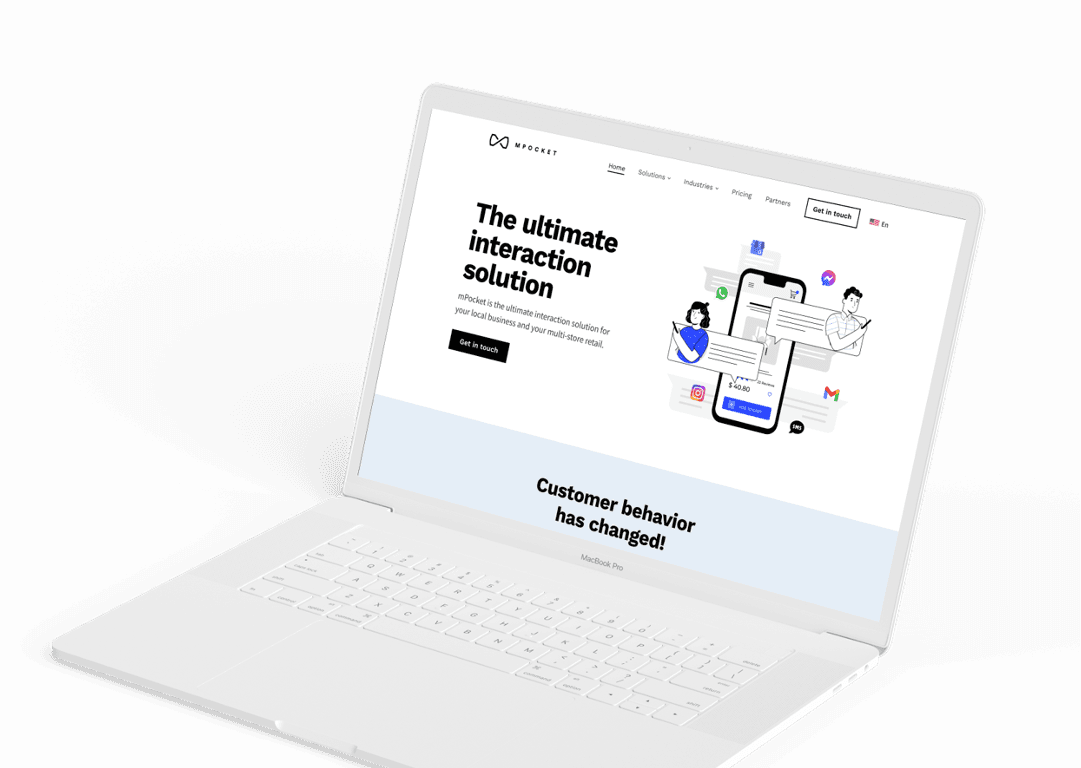MPOCKET: Helping brick-and-mortar businesses digitally connect with their customers

mPocket helped businesses better understand their customer base across numerous channels in real time. They created digital, shoppable touchpoints for brick-and-mortar stores that connected online and in-store engagement.
The Challenge
At the time in Germany, it was commonplace for a customer’s experience with a business to begin and end in-store. To encourage repeat purchases, stores needed to break through the barrier of establishing a digital presence. What they needed was a CRM system, but one simple enough to not distract or complicate daily activities, and it had to be easy to use for a traditional brick-and-mortar business.
For this, the ideal platform was a mobile app, designed to be used by anyone who could operate a smartphone.
Discovery and Objectives
Being a startup, mPocket needed an MVP and thorough road map within 4 months to present to potential clients and investors to ensure the company would meet their funding goals. Because of this, they also had to be mindful about their cost structure. We needed a working product that could be easily scalable on demand without incurring additional costs or unused resources.
Villvay’s Business Analysis team worked with the client to convert their business requirements into a working product. We created a backlog of all necessary product features and defined what would move on into the MVP and most MVP milestones.
The app would be a platform for businesses to:
- Register customers on their system
- Send out updates and reminders for promotions etc.
- Utilize a localized communication hub, letting them keep track of what platform they were communicating with which customer on, scheduling messages etc.
- Integrate platforms like Facebook, Google, TripAdvisor etc. to track ratings,
amongst other features, providing an afforable launchpad for businesses to carve out their digital presence.
Following the discovery period, a dedicated agile team helped iteratively build working product features 4 weeks from project initiation.
Development
Villvay built the new mPocket mobile app on microservices architecture using React Native and Java Spring Boot, hosting it on AWS Cloud.
We started by setting up a Cloud infrastructure to support the microservices architecture. In addition to a minimal running cost, Cloud services are optimized to accommodate changing business priorities and market conditions.
A simple, modern UI was developed using extensive secondary research into user behavior and discussions with stakeholders during the discovery period to understand business workflows. This meant store workers who were basic smartphone users would be able to navigate the app’s features and functions.

As each business would have multiple users within the app, we needed to define separate access levels and functionality for each user by a business admin or super admin. Following further research into IAM (Identity and Access management) solutions, the team customised a popular open-source option to fit mPocket and their users’ needs. This customised IAM was able to define specific access and feature levels for pre-registered users.
To integrate with third-party platforms like Facebook, WhatsApp and Google, custom platform apps and API configurations were utilized to support features such as:
- Two-way messaging
- Reviews
- Synchronization for user data.
Being an interaction aggregator, having the right communication mechanisms to reach customers was critical for mPocket. The product had several functionalities such as subscription reminders, birthday reminders, review requests etc. that needed to be communicated to retail customers through each business’s preferred communication method.
For this, AWS services were used to support automated and manually triggered messaging through e-mail and SMS to customers via the mPocket app.
The Result
- A product overhaul to facilitate mPocket’s change in business scale and direction.
- A product that can be scaled up easily and run with minimal downtime and impact through a microservices architecture.
- Efficient user workflows to help design great user experiences.
- A reduction of average monthly infrastructure costs by 55% due to the optimization of Cloud services.
- Delivering the MVP within 4 months of the project’s inception.
